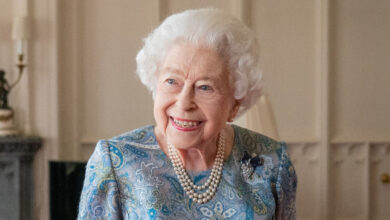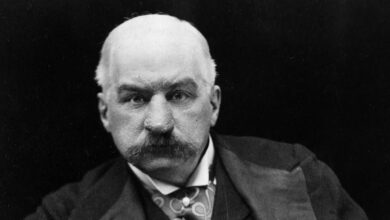Podcast: Play in new window | Download
Subscribe: Spotify | Amazon Music | Youtube Music | RSS
“I’ve only slept with men I’ve been married to. How many women can make that claim?” – Elizabeth Taylor
Elizabeth Rosemond Taylor was born on 27 February 1932 at the family home in the Hampstead Garden Suburb of London. Her parents were Francis Lenn Taylor who was an art dealer and the retired actress Sara Sothern who were both from Arkansas City, in Kansas, USA. Elizabeth had an older brother called Howard who arrived in 1929, the same year that the Taylors moved to London to open an art gallery on Bond Street.
During the early years of her life in London, Elizabeth was witness to the social scene that her parents were part of and which included influential artists and politicians, one of whom was Colonel Victor Cazalet who became a kind of Godfather to her.
Both of Elizabeth’s parents were Christian Scientists and she was raised as such whilst attending Byron House School in Highgate, but as the 1930s were drawing to a close the Taylors became nervous about the imminent war that was brewing in Europe and after being prompted to do so by the United States Ambassador, JFK’s father Joseph P. Kennedy, Sara and the children headed back to the USA on board the SS Manhattan in April 1939. Francis joined them in December at Sara’s father’s house in Pasadena, California, before the family settled in Beverly Hills where the children went to the Hawthorne School.
Partly due to her looks – Elizabeth had stunning violet-blue eyes that were outlined by double eyelashes as a result of a genetic mutation – and partly because, well, it was Beverly Hills, Sara was frequently encouraged to have her daughter audition for films. After it looked unlikely that a return to Europe would be possible in the near future due to the outbreak of the Second World War Sara decided that it was worth a try and Elizabeth auditioned for Universal Pictures and Metro-Goldwyn-Mayer (MGM) during the first part of 1941. Receiving offers of a contract from both studios, Sara opted to go with Universal.
Elizabeth Taylor’s first role was in a small part in the film There’s One Born Every Minute which was released in 1942. Unfortunately, though, this did not lead to any other roles at Universal and her contract was terminated after twelve months.
In late 1942 though, another opportunity came Taylor’s way when Samuel Marx, a producer at MGM, and friend of Elizabeth’s father suggested that she audition for a part in 1943’s Lassie Come Home as there was a role for a child with an English accent. She was signed on a short-term contract of only three months initially but after her performance in Lassie Come Home, she was given a standard seven-year contract as well as minor roles in two more films, Jane Eyre in 1943 and The White Cliffs of Dover in 1944, both of which were set in England.
Her first starring role didn’t take too long to come along though and it was a role that she later stated was the most exciting of her career when she was chosen to play the part of Velvet Brown in National Velvet alongside Mickey Rooney. The film was a huge success but Taylor maintained that it also marked the end of her childhood as the studio started to take control of her life, putting her on a strict schedule that included school, followed by filming followed by evening classes of dancing and singing. In return, Taylor got a new seven-year contract and a weekly salary of $750.
When she turned 15 the studio started to introduce her to more mature parts of the business to increase and improve her public image. She was sent on photoshoots and was starting to be compared with the likes of Lana Turner and Ava Gardner who were both older than her. The roles she was given were also more mature in theme including that of a stockbroker’s son’s love interest in Life with Father and as a teenage man-stealer in 1948s A Date With Judy. Her last role as an adolescent was in 1949’s Little Women and in the same year, Taylor was featured on the cover of Time magazine which called her the leader of Hollywood’s next generation of stars.
In May 1950, only a couple of months after she had turned 18, Elizabeth Taylor married her first husband, Conrad Hilton Jr, who was the heir to the famed hotel chain. MGM organized the wedding ceremony and partly used it to promote Taylor’s next film, Father of the Bride, which was successful enough to spawn a sequel in 1951 called Father’s Little Dividend.
Taylor’s next film was to be the first one since National Velvet in which she said that she was required to act, rather than just be herself, and she received critical acclaim when A Place in the Sun was released in 1951. It was also a commercial success, bringing in over $3m at the box office.
Taylor continued to star in successful films for MGM over the next few years although at one point she was relegated to B-movie status by the studio following the divorce from Hilton after only 9 months of marriage, an event that caused outrage with the public, but her next project saw her return the UK to film Ivanhoe. Taylor wasn’t happy with the film, but it was a box office smash, earning the studio over $11m at the box office. Her last film under her old contract with MGM was The Girl Who Had Everything which was released in 1953 and although she wasn’t totally happy with how she was treated by MGM she agreed to sign a new seven-year deal, mainly for financial reasons, as she had recently married again and was pregnant. The new deal was worth $4700 per week but the studio began to exert even more control over her.
The first few films under the new contract were a romance called Rhapsody, a drama called Elephant Walk, for which she had been loaned to Paramount due to its original star, Vivien Leigh, falling ill, Beau Brummell, a period drama and The Last Time I Saw Paris. During the production of the latter, she became pregnant again and had to agree to a year-long contract extension to make up for the time lost to her maternity leave.
When Hollywood started to concentrate on producing better quality movies rather than quantity due to the competition from television and the resulting fall in ticket sales, Elizabeth Taylor found that she was offered more interesting, rewarding and challenging roles, including that of Leslie Benedict, in 1956s Giant in which she starred alongside James Dean, as well as Maggie alongside Paul Newman in Cat on a Hot Tin Roof in 1958 and as Catherine Holly in Suddenly, Last Summer in 1959 for which she received a Golden Globe Best Actress award. She also won an Academy Award for Best Actress for 1960s Butterfield 8 although the role was one which she didn’t like and it was also her last for MGM.
After moving from MGM she became more famous than ever for two reasons, her million-dollar role in 20th Century Fox’s Cleopatra and the affair she had with Richard Burton whilst filming it. The affair caused public outrage but the couple eventually married in 1964. They went on to star in 11 films together including Who’s Afraid of Virginia Woolf? in 1966 for which Taylor received her second Academy Award for Best Actress and The Taming of the Shrew in 1967. She and Burton divorced in 1974 but after a reconciliation, they remarried in 1975, only for that marriage to end in divorce a year later.
She continued to star in films into the 1970s although her career by now had started to decline but she found a new lease of life on the stage and on television during the 1980s. Also, at around the same time, she was the first celebrity to launch her own perfume brand in collaboration with Elizabeth Arden. The first was called Passion and was released in 1985 with a second called White Diamonds released in 1991. Nine more fragrances were launched in her name over the next few years and Taylor oversaw the creation and production of each one.
Elizabeth Taylor was one of the first celebrities to take part in HIV/AIDS activism and in 1985 she co-founded the American Foundation for AIDS Research, followed by the Elizabeth Taylor AIDS Foundation in 1991.
Her last film role was as Pearl Slaghoople in the critically panned but nevertheless commercially successful Flintstones movie in 1994 and as well as receiving various honours from BAFTA, The American Film Institute and the Screen Actors Guild, in the year 2000 she was also made a Dame Commander in the millennium New Years honours list by Queen Elizabeth II. Her last ever performance before retiring was in a play called Love Letters at an AIDS benefit hosted by Paramount Studios alongside James Earl Jones in 2007.
There was always something about Elizabeth Taylor that could be talked about in the press, whether it was due to her jet-set lifestyle, the fact that she converted to Judaism or the fact that she had been married eight times to seven different men.
She had to contend with injury and illness throughout her life. She broke her back whilst filming National Velvet and almost died of pneumonia in 1961. She became addicted to alcohol and painkillers and became the first celebrity to openly be admitted to the Betty Ford Center in December 1983. She re-entered the Center in 1988 after suffering a relapse and it was at this time that she met her eighth and final husband Larry Fortensky. She was also a heavy smoker.
Her health continued to decline during the last two decades of her life and after 1996 she was rarely seen in public. She had a hip replacement in the 1990s and was treated for a benign brain tumour in 1997 as well as skin cancer in 2002. Six weeks after being diagnosed with congestive heart failure in 2011, she died on 23 March at the age of 79. Elizabeth Taylor was a star of the classical Hollywood studio system at a time when the studio controlled everything but had to live through the transition to a modern celebrity where her private life was the thing that people wanted to know about, and she became arguably the first celebrity who was famous simply because she was famous. After her death, former President Bill Clinton referenced her HIV/AIDS activism and charity work when he said, “Elizabeth’s legacy will live on in many people around the world whose lives will be longer and better because of her work and the ongoing efforts of those she inspired.
Podcast: Play in new window | Download
Subscribe: Spotify | Amazon Music | Youtube Music | RSS




